Chlorophytum crested: description and recommendations for growing
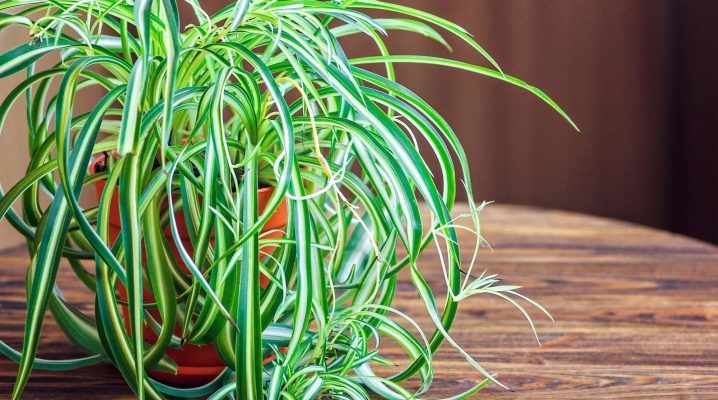
Indoor plants not only decorate and refresh the interior, but also have a positive effect on the microclimate of the room. Some representatives of the flora stand out for their excellent disinfecting effect. Chlorophytum crested has such properties. The plant fell in love with many flower growers due to its original appearance, simple care and the ability to purify the air.
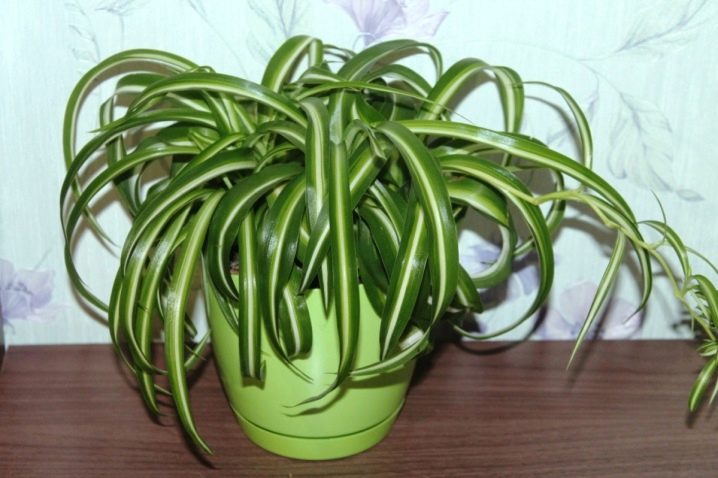
Description and brief characteristics
A herbaceous perennial plant that thrives indoors. Under natural conditions, it can be found in the tropical and subtropical forests of South Africa. The exotic flower is characterized by a striped color. Leaves are rich green, covered with white stripes in the center or edges. This plant was domesticated at the end of the 19th century. It was during this period that European experts bred several samples for growing a flower in indoor conditions in European countries.
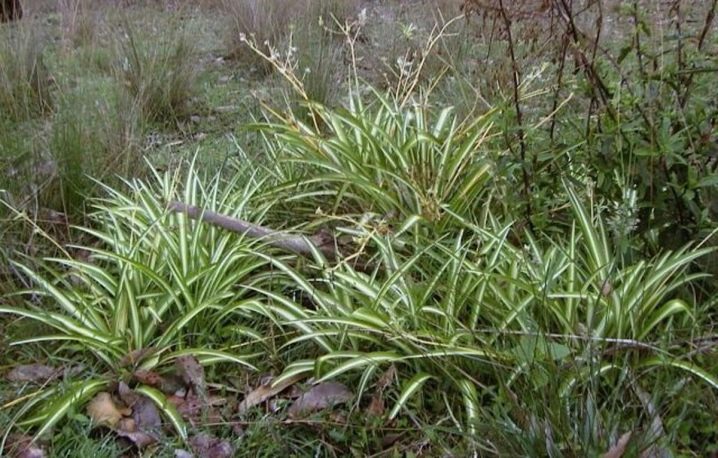
The appearance of the plant is as follows.
- When grown at home, the height will vary from 30 to 40 centimeters.
- In the spring, during the flowering period, you can see small white or light green flowers located along the stems.
- The roots are located close to the soil surface.
- The bunch of green mass is dense. Its maximum width reaches 30 centimeters. Length - from 20 to 50-70 centimeters. The leaves are narrow and thin.
- In the process of development, babies (processes for transplanting) with small roots appear at the tips of drooping stems. They have the ability to absorb moisture and air.
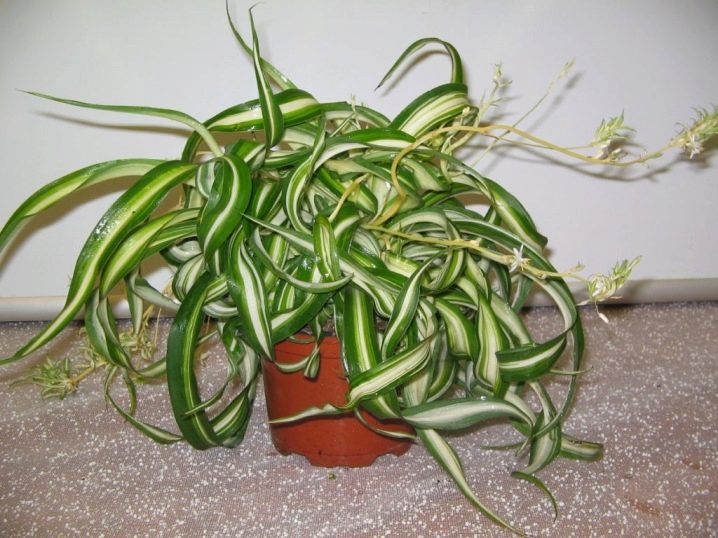
Home care
For a plant to feel great and enjoy a healthy appearance, it needs a sufficient amount of moisture, warmth and light. Despite this, the flower can survive a slight lack of lighting. Also, he is not afraid of a slight drying out of the earth and changes in temperature conditions. Due to these characteristics, the plant is ideal for beginner growers.
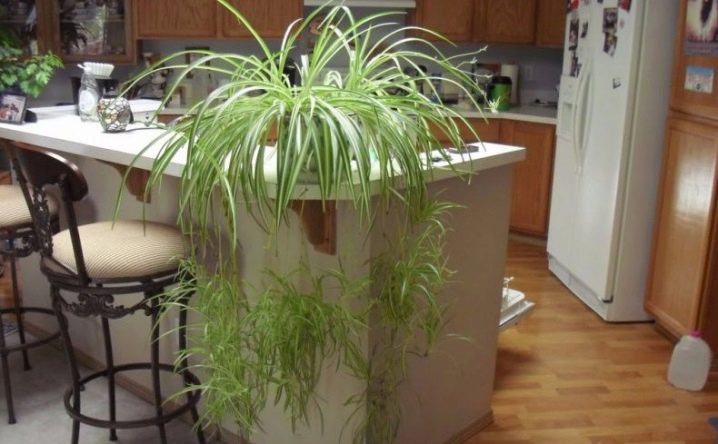
Abundant fertilization is not necessary, as is a large flower pot. The ideal temperature, in the warm season, varies from 14 to 18 degrees Celsius, and with the arrival of winter, the indicator drops to 10-12 degrees.
In dry and hot weather, it is recommended to regularly spray with settled water at room temperature. In winter, the amount of watering is reduced to make it easier for the plant to tolerate a cold snap.

The soil
A soil substrate with a neutral acidity index (pH from 6 to 7) is great for growing a plant. The soil should be light, airy and always fertile. It is not difficult to get the right mixture in a specialized store. You can also prepare the composition yourself by mixing the following ingredients in a 3: 1: 1 ratio:
- sod land;
- leafy land;
- river sand (washed).
Remember that the roots of the flower are almost at the surface of the ground, which will make a narrow container unsuitable for growing. A container, the diameter of which will exceed the height by about 20-30%, is great.

Light
Direct sunlight will harm the plant. Only bright, but at the same time soft and diffused light will do. Experts note that the lack of lighting negatively affects the beauty of the flower. He begins to lose the brightness and expressiveness of color.
The ideal place for a plant is a window in the south-eastern part of the house.
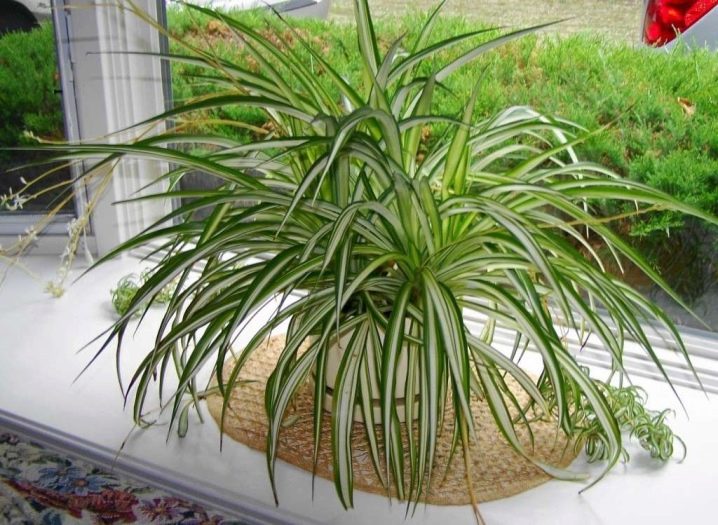
If it is not possible to place it on the windowsill, install a pots with a flower next to the window opening. With this arrangement, the plant will receive light from morning until noon or after 2 pm until sunset. Also, chlorophytum will feel great from the north side, provided it is located directly on the windowsill, and not on the adjacent wall.
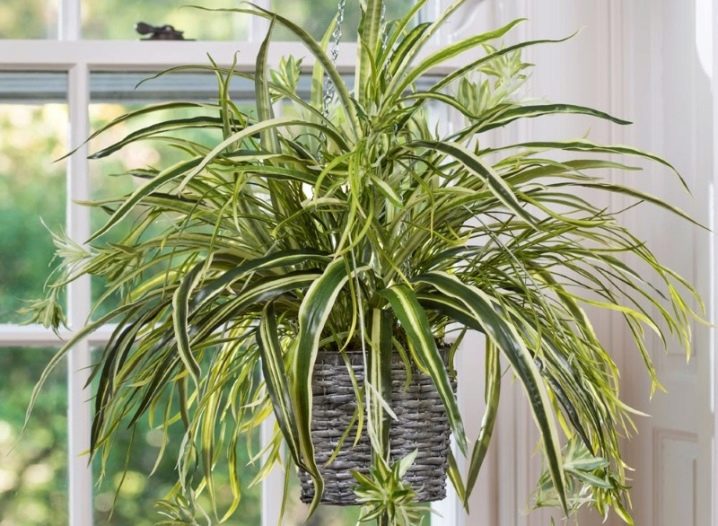
Watering
With a significant lack of moisture in the soil, the leaves will begin to dry out. With a short-term shortage of it, the plant will be able to maintain its appearance due to dense roots. Pay particular attention to the moisture content of the earth during the active growth of the flower. In the warm season, it is necessary to water the plant about 2 times a week or conduct 1 watering every 3-4 days. In this case, excess moisture should not stagnate in the flower pot. With the arrival of autumn, the amount of watering is cut. During this period, the plant will be sufficiently moistened once a week, as soon as the topsoil dries up a little.
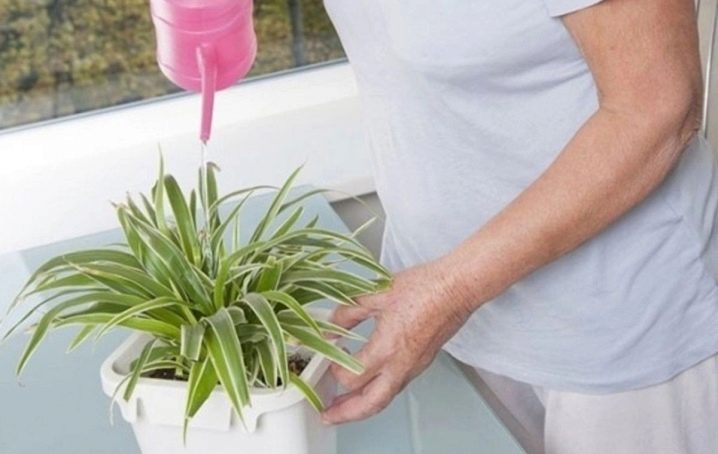
Fertilizer
The flower needs additional feeding in the summer, when the flowering period begins, as well as during the formation of offshoots of children. Adult plants also need fertilizer. They are introduced into the soil from May to the end of summer, 1-2 times a month. The preparations are dissolved in water and the soil is watered. On the market, you can find balanced formulations designed specifically for this variety.
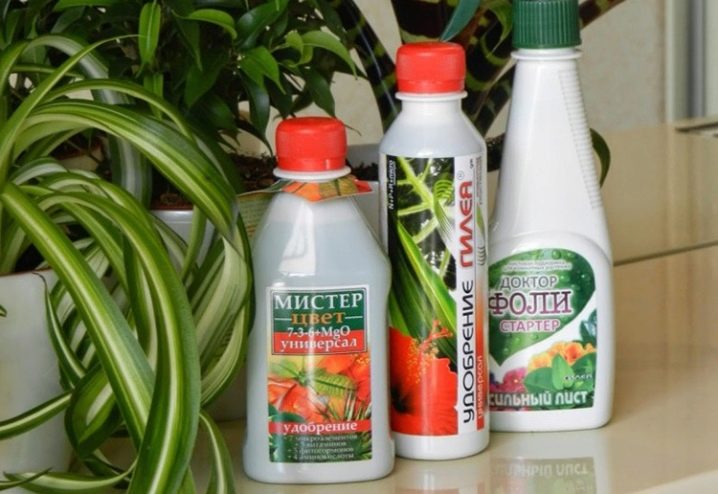
Some drugs are used depending on the condition of the plant or to achieve a certain effect.
If the color of the flower begins to lose its saturation, use formulations containing magnesium, molybdenum and iron. To stimulate growth, urea, potassium nitrate and ammophoska are suitable.


The need for a transplant
For better health, the plant is transplanted. The work is carried out at the beginning of the active growing season, which falls in the spring. The flower needs to be transplanted annually during the first 5 years of growth. For an adult plant, choose a container that is several centimeters larger than the previous one. After complete formation, chlorophytum no longer needs to be transplanted.
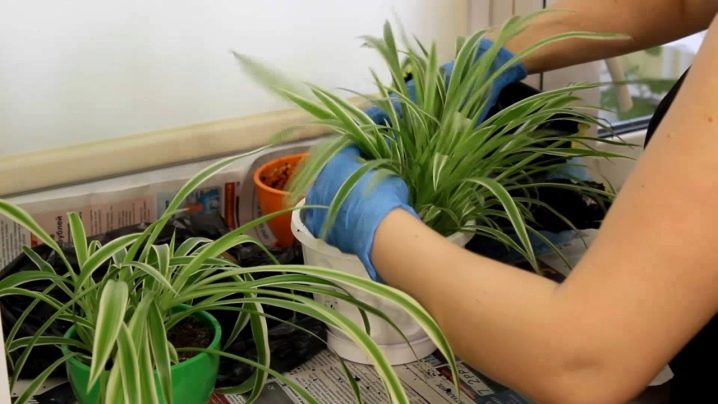
Reproduction
The easiest way to propagate a plant is to plant a baby with developed aerial roots from the mother bush. The vegetative propagation method allows you to grow a new flower in the shortest possible time. If the conditions for the development and growth of the plant are comfortable, the shrub begins to form several tiers of children, ready to be transplanted to a new place. Each of the shoots takes root without any problems and, over time, forms into a full-fledged and adult plant.
Experts recommend removing unnecessary babies due to the fact that they take a lot of energy from the mother plant.
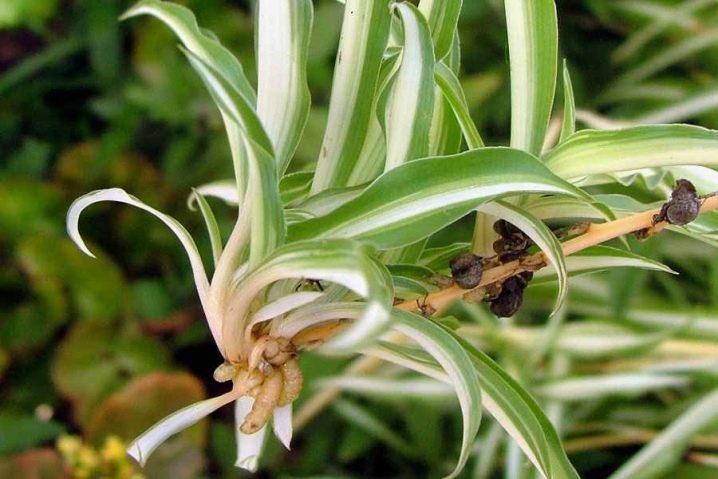
Roots with roots 2 centimeters long are suitable for transplanting into separate containers. For growing young sprouts, a peat and compost substrate is great. They must be germinated in a lighted place, but make sure that the direct rays do not touch the plants. Remember to moisturize the soil regularly. In favorable conditions, new foliage is formed during the first 14 days.
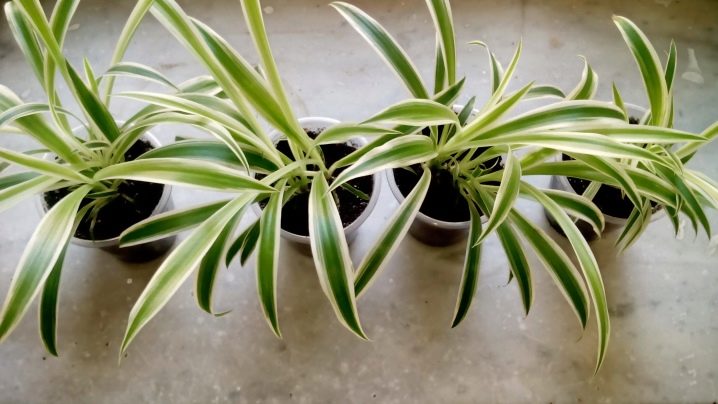
It is also possible to sprout a flower from shoots that do not yet have their own roots. In this case, the baby is carefully cut off and then placed in a plastic glass filled with clean or settled water. The liquid should only touch the base of the scion socket. When the first roots appear, the plant can be transplanted into the ground.
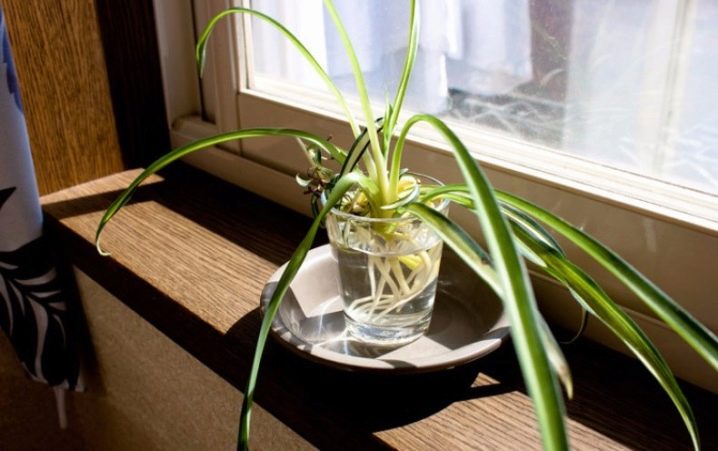
You can increase the amount of chlorophytum by dividing the shrub into several parts and planting them in separate containers. The disadvantage of this method is that the flower is difficult to tolerate this procedure.
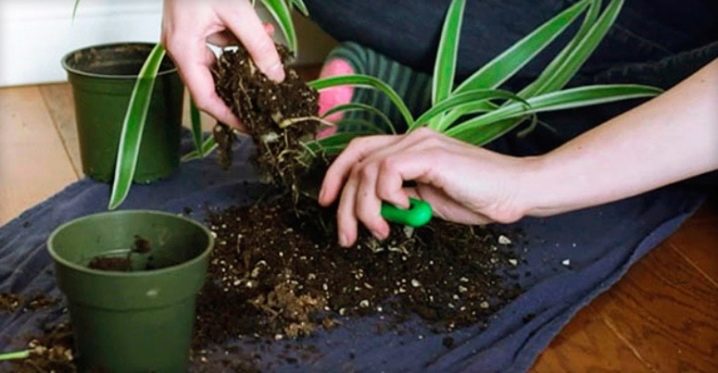
Using seeds can also multiply the plant, however, this is a very complex and difficult process.
This breeding method is only recommended for professional breeders.
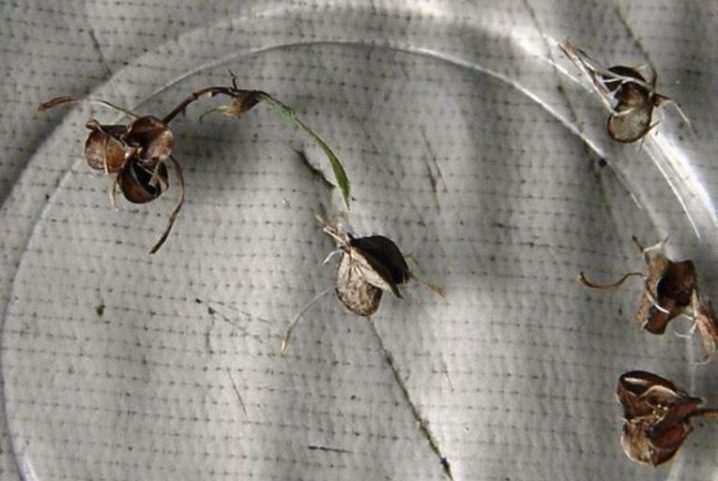
Varieties
Through the efforts of breeders, the following varieties of chlorophytum.
- The kind called Bonnie characterized by curled leaves resembling large curls.
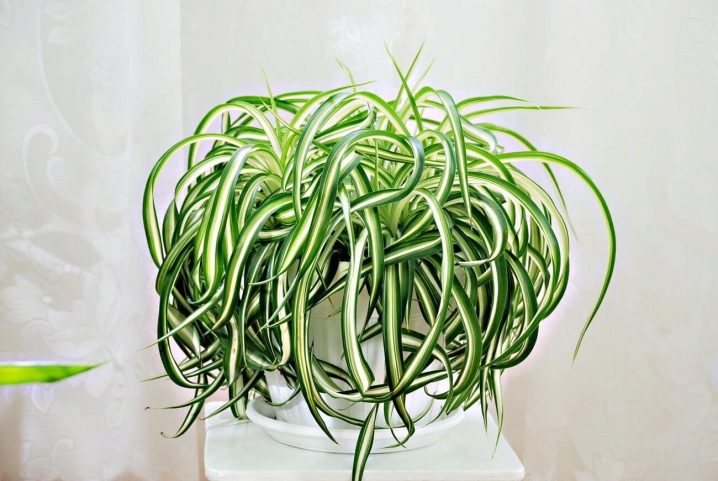
- Plant foliage Ocean has white "hair" around the edges. The maximum foliage length is 30 centimeters.
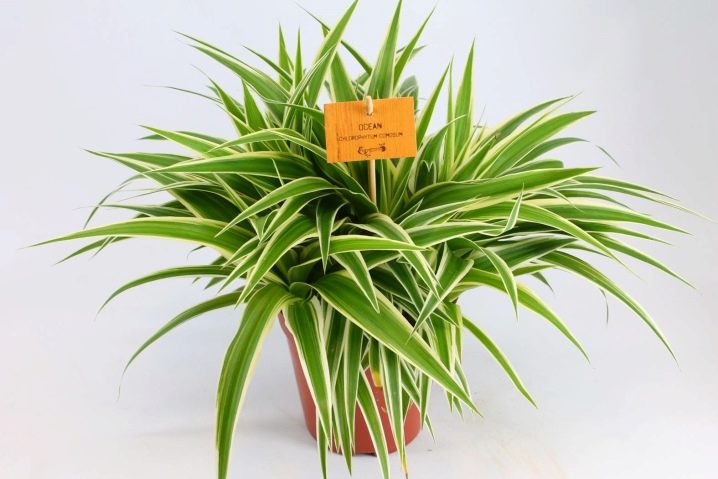
- View Laxum has the thinnest leaves compared to other varieties. The length reaches 20 centimeters.
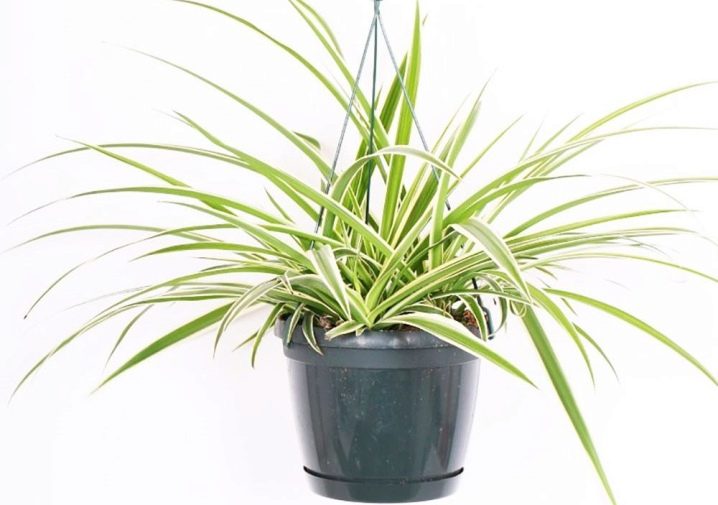
- Variegatum. Foliage with white stripes in the edging reaches 40 centimeters.
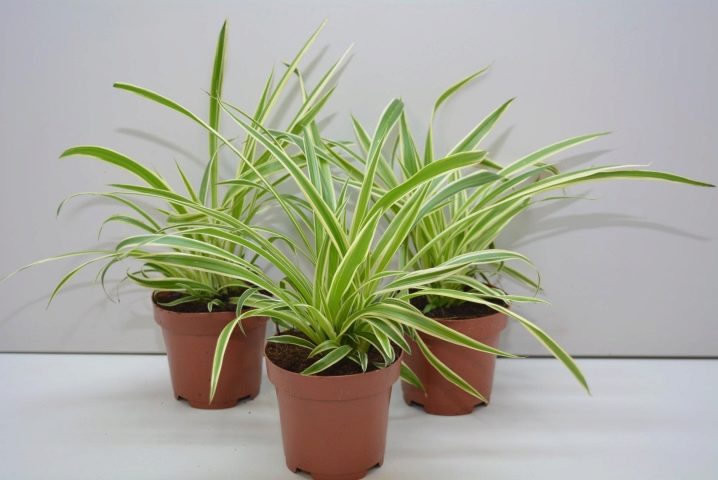
- Variety Mandaianum differs in compact size due to the length of the leaves up to 15 centimeters. The color is dark green, with a yellow stripe in the center.

- View Picturatum also decorated with yellow stripes, but in this case they are located at the edges, and the length of the foliage is up to 30 centimeters.
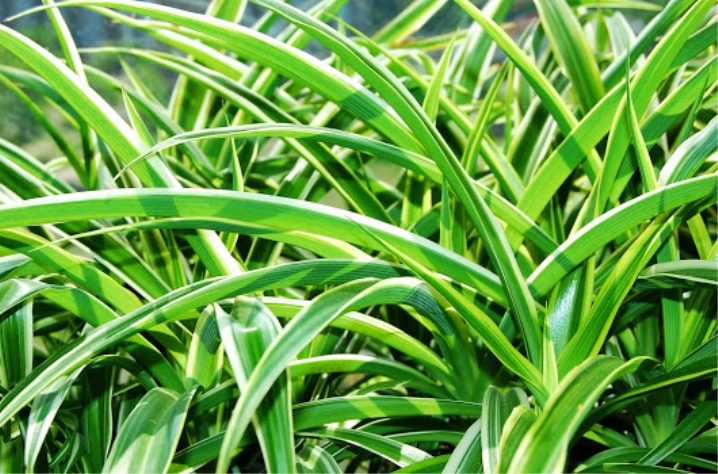
- Plant Vittatum stands out with leaves, the average length of which is 60 to 70 centimeters, with one or more white stripes in the middle.
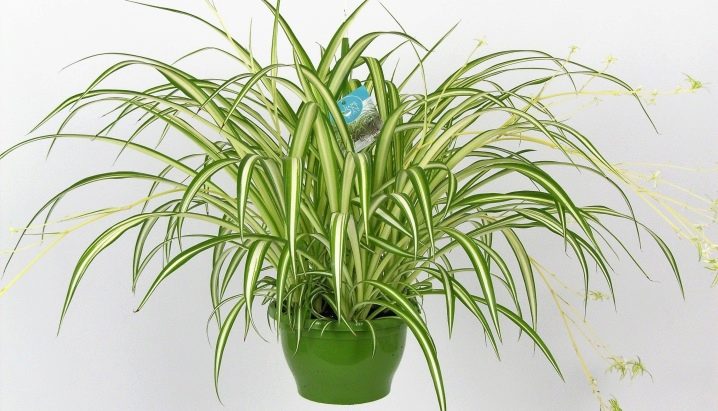
Each species is unique in its own way, but the Vittatum variety is in special demand among flower growers.
Features of the Vittatum variety
This type of indoor plant has earned high popularity due to its unique properties for cleaning indoor air. It is not only attractive, but also a very unpretentious and useful plant. It is often chosen by residents of large cities with poor-quality ecology. As practice shows, the plant effectively cleans the air from formaldehyde and carbon monoxide.
It is recommended to place the flower not only in living rooms, but also in the kitchen.
Due to its unique properties, this variety is often called the champion in air purification.

Special properties of the plant
Chlorophytum crested has special qualities for cleaning indoor air. Due to its amazing properties, it is often grown in medical institutions, schools, kindergartens and other similar institutions. In order to study the effectiveness of the plant, scientific studies have been carried out. During the work, it turned out that in 24 hours the flower is able to neutralize up to 70% of dangerous microorganisms, as well as absorb 80% of toxins around itself. Also, the plant is often used for vertical gardening.
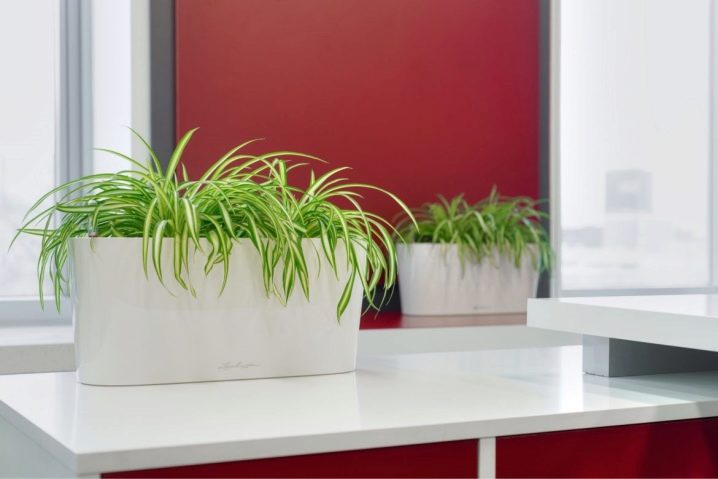
Professional breeders distinguish the following properties of the plant:
- a significant reduction in the number of harmful microbes in the room;
- disinfection;
- utilization of gas that appears as a result of burning coal, firewood and other materials;
- neutralization of toxins emitted by artificial building and finishing materials.
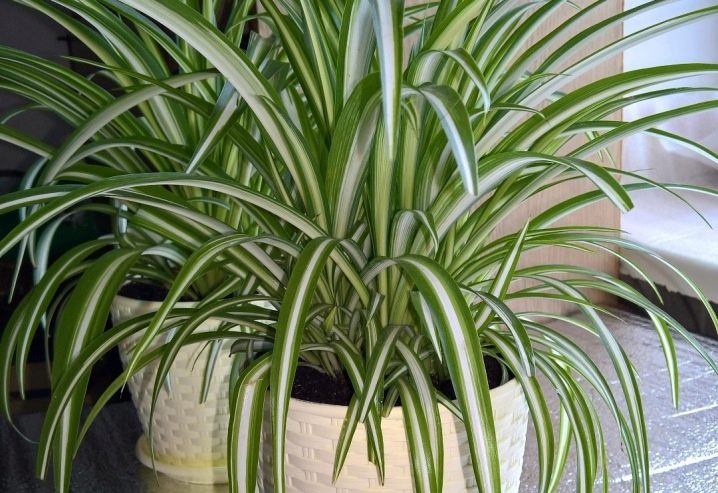
For novice florists, this plant is suitable due to:
- easy and simple reproduction with the help of shoots;
- excellent growth under artificial lighting;
- darkening tolerance.
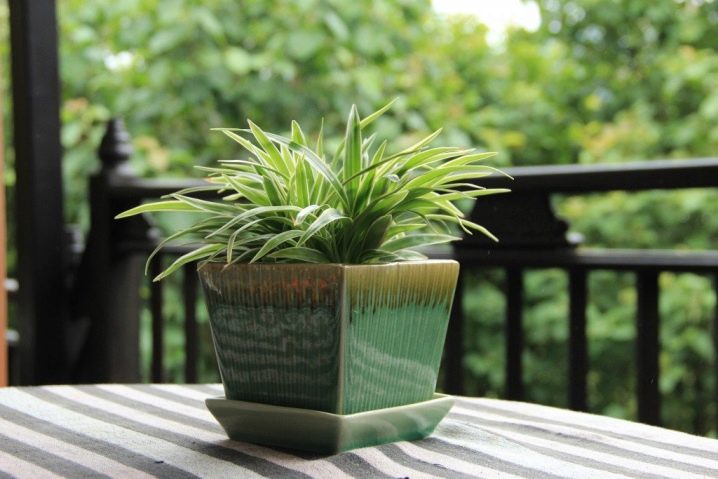
For tips on growing and caring for chlorophytum, see the next video.





























The comment was sent successfully.